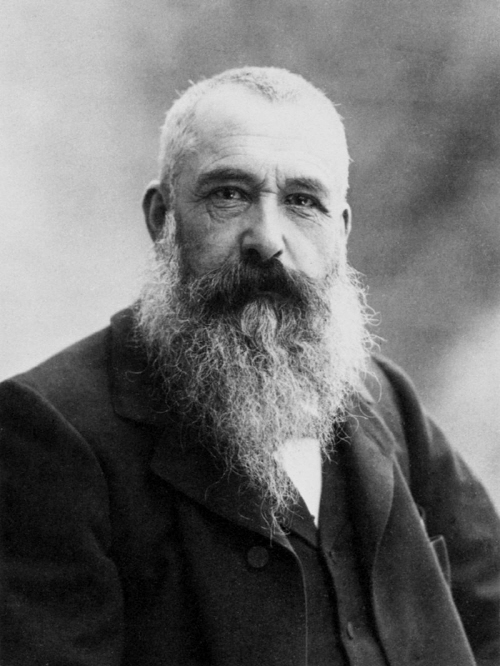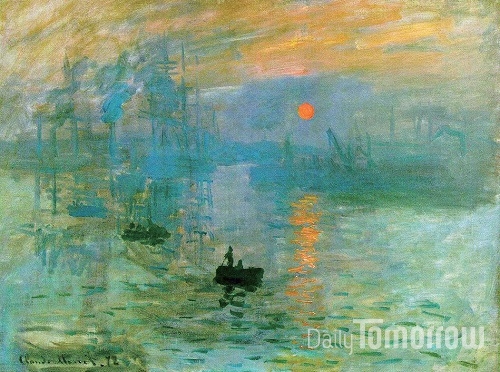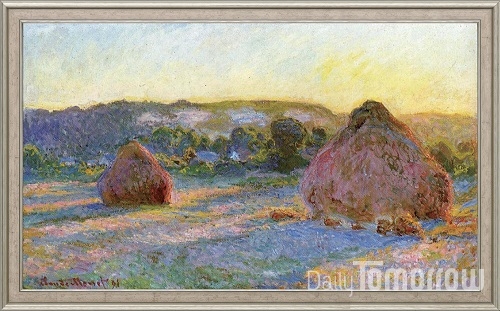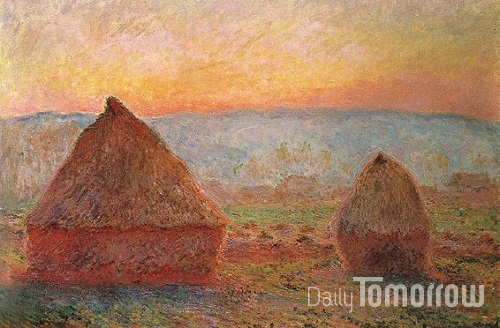Oscar-Claude Monet was born in 1840, in France. From the age of 15, finding the features of people’s faces, he began to draw caricatures. Monet’s father didn’t support Monet painting, so Monet decided to sell his paintings to earn money. He signed his paintings and sold them to art supply stores and stationary stores. His work became popular so more and more people were asking for them. He drew caricatures of famous actors and earned 20 francs for each drawing. Considering that workers were paid five francs a day, that was a substantial amount.

Monet displayed his work in an art supply store showcase where he met Eugene Boudin, a landscape painter. Monet thought Boudin and his landscape paintings were insignificant, and was annoyed that Boudin’s work was displayed next to his own. On the country, Boudin was greatly impressed by Monet’s paintings—his agility and improvisation, and the manner in which he could quickly capture his subjects’ features. He wanted to meet Monet, who, rejected his overtures. Boudin, however, persisted until Monet eventually opened his heart towards Boudin and agreed to a meeting. Boudin suggested that Monet try plein air painting outside in natural light. Monet took the suggestion, and for the first time set up his easel outdoors and started painting. This was the first time he appreciated natural light, and he decided to become a landscape artist.
“I Will Become Great”
Until the early 19th century, painting outdoors was uncommon, and especially in France, landscape painting was thought of as a substandard genre. However, after meeting Boudin, Monet’s eyes were opened to plein air painting. Monet was infatuated with painting natural light, and always painted outdoors. He moved his brush around swiftly to capture the hourly-changing light. Such style of painting was unfamiliar at the time: it seemed like unfinished artwork. Naturally, Monet’s landscapes didn’t sell and he became poor. Living conditions became worse after he married and the family usually starved. Nevertheless, Monet went out and painted for over 10 hours a day.
Now, it is almost impossible to buy Monet’s paintings, as they cost hundreds of millions of dollars. However, most of the letters Monet sent to his friends at that time were letters asking to borrow money. But Monet said, “I will become great,” and as time passed his belief crystalized.
The First Impression, the Start of Impressionism
One early morning in 1872, Monet painted the sunrise at the Le Havre port. He quickly painted the moment the sun began to rise, as if he had painted with his eyes closed. In April of 1874, Monet and his friends opened an exhibition in photographer Nadar’s studio on Capucines Street in Paris. He displayed five paintings, one of which was the painting done on that spring morning in 1872: Sunrise. The curator in charge of the exhibition list told Monet that the title was too ordinary and suggested that he rename it. So Monet added the word “Impression,” and changed the title to Impression, Sunrise.

At the time, there was an art exhibition being held by France’s most prestigious academy, with eight to 10 thousand people in attendance. On the other hand, only 175 people had visited Monet and his friends’ exhibition on the first day, and on the last day, a mere 54. On top of that, most of the people scoffed at the paintings, and criticized them, saying that the “artists were amateurs that barely knew how to use a brush.”
Louis Leroy, art critic of Le Charivari wrote an article called “The Impressionists’ Exhibition” and commented that Monet’s Impression, Sunrise was a “vague impression that was no better than a rough sketch of a wallpaper pattern.” However, a few days after Leroy wrote his article, critic Castagnary wrote a favorable review, saying, “If I were to describe their intention in one word, I would have to create a new word: Impressionism. They are impressionist because they wanted to draw the impression that they got by looking at the scenery.”
Although Monet’s painting was laughed at first, Impression, Sunrise introduced a new concept of impressionism, and the word Leroy used to criticize Monet’s painting eventually became the name for Impressionist Artists.
Impressionism started from Monet’s new understanding of light, but there was another reason. Until the early 19th century, paint was put in pig bladder or glass jars so there was a limit to painting outdoors. But after tube paint was developed in 1841, limitations on location disappeared. Also, after the invention of the camera, there was a need for a change from paintings that simply reproduced their subjects. The first exhibition of Monet and impressionists was the flare announcing the beginning of a new change.




The Artist Who Painted in Series
Light was always the main feature of Monet’s paintings. He rapidly moved his brush around to capture each impression of nature according to the changes in natural light. Instead of worrying about what to paint, he used ordinary things like his wife and children or the location he happened to be in.
Monet created a new painting technique: painting the same subject repeatedly. From 1884 to 1890, he created the Grainstacks series. Each painting portrays the same subject, but none of the paintings are identical. When the day is about to break, midday when the sunlight is strongest, evening when the sun darkens . . . he observed the haystacks at various times and studied their shades and colors. He was so infatuated that he could differentiate the colors of the movement of light by the second. Unfortunately, his eyes were damaged because of looking at light all day, and he eventually lost most of his sight due to cataracts. But he never gave up on painting and created the Water Lilies series by the pond at his home. The series consists of about 250 paintings.
Monet said, “All I did was to look at what the universe showed me, to let my brush bear witness to it.” Most artists seek fancy subjects and focus on making others enjoy their work. Monet, however, discovered the treasures within nature, in which people have little interest and tend to belittle because it has always existed; he found the great world of light. While filling his canvases with this remarkable nature for his whole life, he naturally became a great artist. His paintings still show many people a new world of light.

